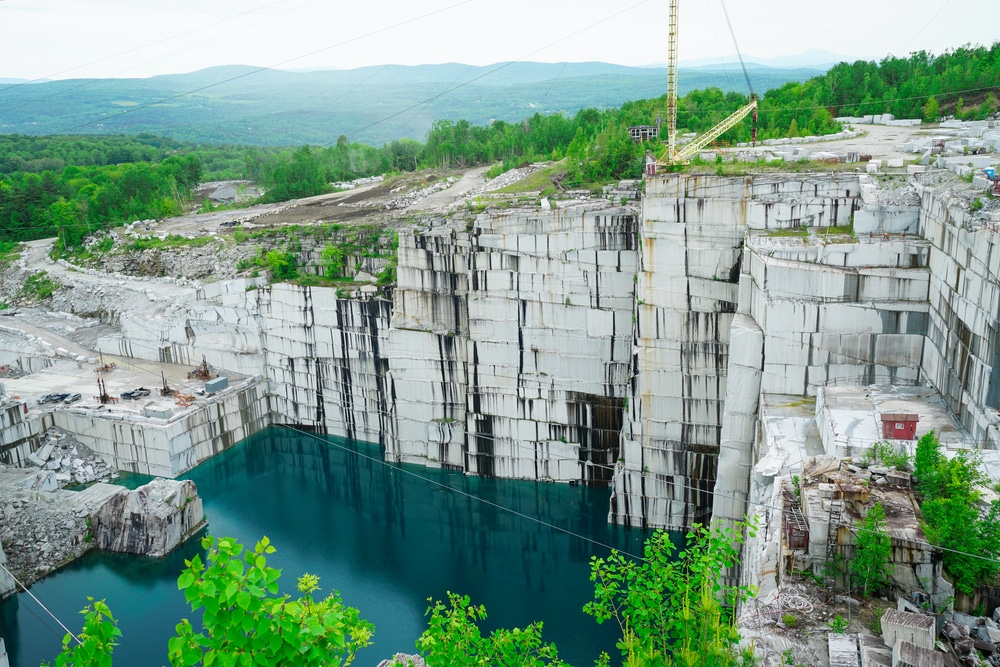The Covert Gems: Discovering Granite Quarries in South Africa
The Covert Gems: Discovering Granite Quarries in South Africa
Blog Article
Uncovering the Rich History and Lasting Practices of Granite Quarrying
As we base on the precipice of uncovering the complex tapestry of granite quarrying, a trip through time discloses not just the physical act of drawing out rock but additionally the cultural and historical importance woven into the very textile of this method. From the old origins that laid the foundation for modern-day quarrying techniques to the lasting methods that are shaping the future of this sector, each chisel mark on granite surfaces narrates waiting to be uncovered (granite quarries in south africa). The legacy of granite quarrying stretches far past simple extraction; it is a testament to human resourcefulness, strength, and the enduring attraction of this marvelous rock
Old Origins of Granite Quarrying
Dating back to old human beings, the practice of quarrying granite has been an indispensable part of human history and architectural improvement. The earliest evidence of granite quarrying dates back to ancient Egypt, where enormous pyramids and detailed sculptures were crafted from this durable stone. The Egyptians made use of primitive devices to extract granite blocks from quarries, showcasing the significance of this material in their monumental buildings.
Progressing in background, the Greeks additionally made substantial payments to the quarrying of granite. The Greeks utilized granite in different architectural wonders, such as holy places and sculptures, demonstrating their skill in shaping and carving this durable rock. The Romans additionally refined the techniques of quarrying granite, employing advanced tools like knives and hammers to extract and form granite for their iconic structures.
Via the centuries, the method of quarrying granite has advanced, with modern innovations improving efficiency while keeping the timeless charm of this natural stone - granite quarries in south africa. From ancient human beings to contemporary home builders, the legacy of granite quarrying continues to shape our globe
Advancement of Quarrying Strategies
The advancement of quarrying techniques has been marked by a constant development towards higher performance and accuracy in removing granite. Early quarrying techniques entailed hand-operated labor with basic tools such as chisels, hammers, and wedges to remove granite blocks from the earth.
Advancements in computer-controlled equipment and 3D modeling have actually optimized quarrying operations, leading to marginal environmental impact and improved sustainability methods. As the demand for granite continues to rise, the evolution of quarrying methods remains integral to conference industry needs efficiently and sustainably.
Social Relevance of Granite
Granite holds a profound cultural significance throughout various people because of its long-lasting visibility in building masterpieces and prized monuments. From the magnificent pyramids of Egypt to the complex makings of the Angkor Wat holy place in Cambodia, granite has been a material of choice for revealing splendour and durability in social heritage. In old Rome, granite columns embellished holy places and public structures, symbolizing toughness and durability. The social relevance of granite prolongs past its physical qualities; it embodies resilience, stability, and timelessness, making it a sign of sustaining heritages and traditions.

Lasting Practices in Quarrying
Amidst the abundant history of granite quarrying and its cultural relevance lies an expanding focus on sustainable methods within the sector. As environmental understanding and issues regarding source exhaustion have enhanced around the world, the quarrying sector has actually increasingly welcomed sustainable methods to lessen its effect on the atmosphere and bordering communities.

Furthermore, reclamation and rehab of quarry websites post-extraction are essential to sustainable techniques. By recovering quarried areas to a natural or advantageous state, such as producing wildlife environments or recreational areas, quarriers can counter the environmental footprint of their procedures and contribute favorably to the neighborhood ecological community.
Heritage of Granite Quarrying
With a historical background soaked in craftsmanship official site and industrial progress, what withstanding impact has granite quarrying left on the landscape of modern society? The heritage of granite quarrying goes beyond plain extraction methods; it has actually shaped architectural wonders, urban landscapes, and social heritage worldwide. The long lasting nature of granite has made it a preferred option for monuments, buildings, and framework, standing as a testament to the skill and virtuosity of quarry employees across generations.
Furthermore, the economic impact of granite quarrying can not be ignored. The market continues to offer job opportunity and drive neighborhood economic situations in regions where granite removal prevails. It has actually additionally spurred technological developments in quarrying techniques and equipment, causing much more efficient and sustainable methods.
In regards to sustainability, the heritage of granite quarrying includes efforts to minimize environmental impacts with improvement tasks and liable resource management. By stabilizing economic passions with environmental stewardship, the market aims to make sure that future generations can proceed to profit from this enduring all-natural source.
Final Thought

Report this page